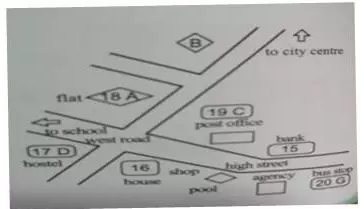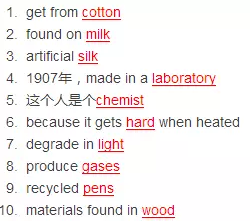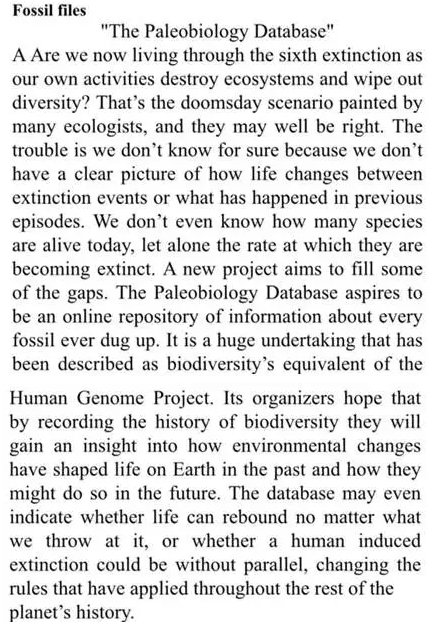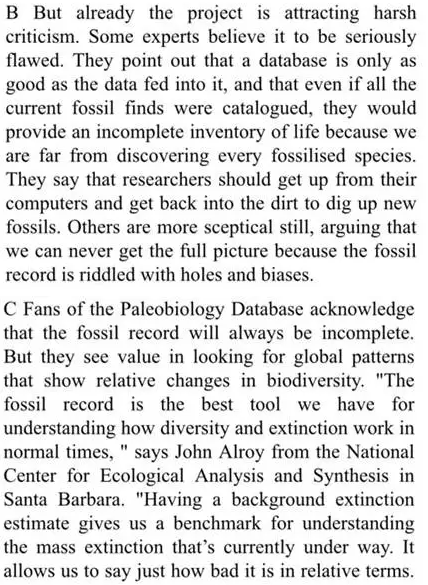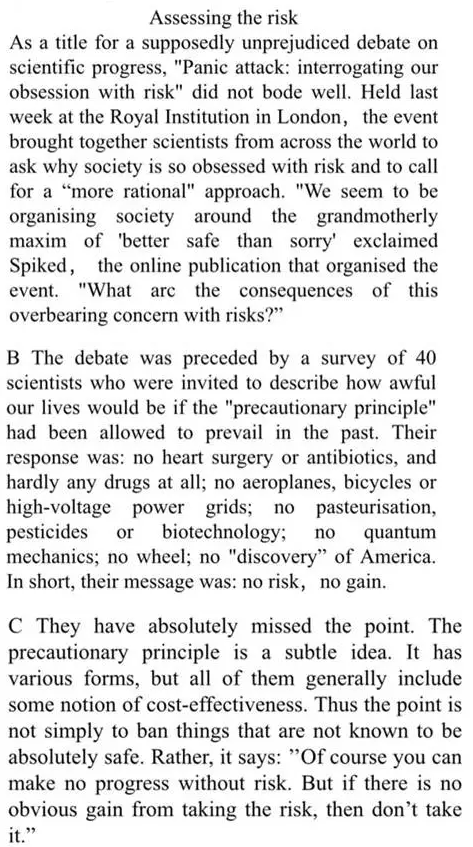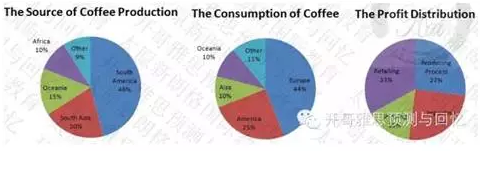雅思考试:2016年1月23日场次真题
上传者:丁德路|上传时间:2016-01-28|密次下载
雅思考试:2016年1月23日场次真题
|
考试日期 |
2016年01月23日 |
|||
|
总体评析 |
Ø 15年0207的原题 Ø 填空:选择20:20 Ø 题型比例和15年目前看来仍然类似
Ø 地图题有增加的趋势 |
|||
|
重点关注 |
Ø Section 1求职 Ø Section 3电话咨询 Ø Section 2目击证人 Ø Section 4塑料的制作 |
|||
|
Section 1 |
版本号 |
场景 |
题型 |
|
|
V130706S1&v150207 |
求职 |
Completion |
||
|
一句话简介 |
求职场景job details |
|||
|
详细回忆 |
1.Location: Market/ Station Road, Branch(market 和station 轮换考,此次考试是market 2.Day: Sunday, working hours Job duties: -3.lifting heavy items -4.watering plants 5.communication skills 6.good at maths 7.interview arranged for: Wednesday at 5 8.name of the interviewer: Maria Rapana 9.telephone No.:3435573(7位数里面有double 5) 10.take passport |
|||
|
重点词汇及扩展 |
① S1常考信息星期,名字拼写,时间,及电话号码,所以这些是学员必须要掌握的另外还有日期 ② 常见的单词 ③ 还有并列结构watering & lifting |
|||
|
Section 2 |
版本号 |
场景 |
题型 |
|
|
V120512S2&v150207 |
电话咨询 |
Matching&mapping |
||
|
一句话简介 |
一个女的租房子男的在电话里给她信息一个house,一个flat,一个hostel |
|||
|
详细回忆 |
主题提示:一个女的上大学租房子,男的在电话里给她介绍信息 一个house,一个flat,一个hostel Questions11-14 completion A. Flat B. House C. Hostel 11.garden--A house private garden size 12.garage--A house need extra pay:要付钱hostel说afraid not 13.Security...alarming system--B(唯一一个有报警系统的,但其他两个也挺安全 14.new furniture--B
16.House in front of the pool 17.Hostel cross at the high street and west street 18.flat(说去city那条路的第一个路口左边不用经过before cross) 19.post office(说west street那条路右边) bus stop(agency的右边不用过马路) (补充说明两条斜十字交叉的主干道west st. V.s. St.Ann’s road),出发点为property agency,旁边是pool,右上角通往city centre,上方St.Ann尽头为学校) |
|||
|
重点词汇及扩展 |
① 难度较高这个月已经考了这是第三次地图题 ② 可以参考c842掌握相关的交通类的单词很重要,比如,crossroads, crossing, junction, intersection,corner, etc. |
|||
|
Section 3 |
版本号 |
场景 |
题型 |
|
|
V70105&v150207 |
目击证人 |
Multiple choice&matching |
||
|
一句话简介 |
目击证人的研究 |
|||
|
详细回忆 |
21.什么样的witness 容易被人相信 B.confidence 22.text有什么样的问题 C.data比较过时 23.witness 的 reliability B.long time 时间太久 24.幼稚的witness怎样定义 A.他们没有经历过犯罪调查 B.他们不认为看到的是犯罪 25.witness的啥 A他们不想修改证词,因为会显得自己很蠢 26.fail to ....authority B.fall to compare the reality with the subjective idea 27-30(matching 配对调查问卷类型跟对象 27.第一阶段--afraid being in an unfamiliar environment孩子们会比较害怕 28.第二阶段--孩子对案件属于不清楚 29.第三阶段--孩子有时候分不清真相和假象children cannot tell the truth and lie ,会make up 30.第四阶段--孩子不相信提问者(questioner) |
|||
|
重点词汇及扩展 |
利用好时间读题很重要s3选择题的题干和选项较长所以尽量读懂题干看完选项,适当的速记如果可以 |
|||
|
Section 4 |
版本号 |
场景 |
题型 |
|
|
V120204S4 &v150207 |
塑料的制作 |
填空 |
||
|
一句话简介 |
Plastic 塑料的制作 |
|||
|
详细回忆 |
先放一个简单版的
31. Use cotton and acid 32. Plastic is commonly found on:product such as detergent bottles, milk jugs(dairy product bottles) 33. First is used to produce artificial silk (Cellulose赛璐璐was also used to produce cloth,while the men who developed celluloid were interested in replacing ivory,those who developed the new fibers were interested in replacing another expensive material,silk) 34. Cellulose is not like real plastic because it becomes hard when heat The output of the process hardened into a hard, ivory-like material that could be molded when heated. 35. first plastic made in a laboratory 36. A chemist named Alexander Parkes developed the first plastic. 37. Recycled pens 38. Disadvantages:it will produce gases when, in some cases, burning it could release toxic fumes.also, the manufacturing of plastics often created large quantities of chemical pollutants 39. It decomposes by light research has been done on biodegradable plastics that break down with exposure to sunlight Natural rubber wood no longer had a stranglehold on rubber supplies. Japanese use in sustainable cars primary synthetic rubber for the manufacture of tires. |
|||
|
重点词汇及扩展 |
① 31.典型的并列结构,cotton很多考生不熟。32.举例列表题简单。36.名字专有名词等 ② 判断词性很重要跟题不丢 |
|||
|
考试日期 |
2016年1月23日 |
|
Reading Passage 1 |
|
|
Title: |
Classing Societies |
|
Question types: |
判断7 简答6 |
|
文章内容回顾和参考答案 |
参考文章(仅供参考): CLASSIFYING SOCIETIES Although humans have established many types of societies throughout history, sociologists and anthropologists tend to classify different societies according to the degree to which different groups within a society have unequal access to advantages such as resources, prestige or power, and usually refer to four basic types of societies. From least to most socially complex they are clans, tribes, chiefdoms and states.ClanThese are small-scale societies of hunters and gatherers, generally of fewer than 100 people, who move seasonally to exploit wild (undomesticated) food resources. Most surviving hunter-gatherer groups are of this kind, such as the Hadza of Tanzania or the San of southern Africa. Clan members are generally kinsfolk, related by descent or marriage. Clans lack formal leaders, so there are no marked economic differences or disparities in status among their members. Because clans are composed of mobile groups of hunter-gatherers, their sites consist mainly of seasonally occupied camps, and other smaller and more specialised sites. Among the latter are kill or butchery sites—locations where large mammals are killed and sometimes butchered-and work sites, where tools are made or other specific activities carried out. The base camp of such a group may give evidence of rather insubstantial dwellings or temporary shelters, along with the debris of residential occupation.TribeThese are generally larger than mobile hunter-gatherer groups, but rarely number more than a few thousand, and their diet or subsistence is based largely on cultivated plants and domesticated animals. Typically, they are settled farmers, but they may be nomadic with a very different, mobile economy based on the intensive exploitation of livestock. These are generally multi-community societies, with the individual communities integrated into the larger society through kinship ties. Although some tribes have officials and even a "capital" or seat of government, suchofficials lack the economic base necessary for effective use of power. The typical settlement pattern for tribes is one of settled agricultural homesteads or villages. Characteristically, no one settlement dominates any of the others in the region. Instead, the archaeologist finds evidence for isolated, permanently occupied houses or for permanent villages. Such villages may be made up of a collection of flee-standing houses, like those of the first farms of the Danube valley in Europe. Or they may be clusters of buildings grouped together, for example, the pueblos of the American Southwest, and the early farming village or small town of Çatalhöyük in modern Turkey.ChiefdomThese operate on the principle of ranking — differences in social status between people. Different lineages (a lineage is a group claiming descent from a common ancestor) are graded on a scale of prestige, and the senior lineage, and hence the society as a whole, is governed by a chief. Prestige and rank are determined by how closely related one is to the chief, and there is no true stratification into classes. The role of the chief is crucial. Often, there is local specialisation in craft products, and surpluses of these and of foodstuffs are periodically paid as obligation to the chief. He uses these to maintain his retainers, and may use them for redistribution to his subjects. The chiefdom generally has a center of power, often with temples, residences of the chief and his retainers, and craft specialists. Chiefdoms vary greatly in size, but the range is generally between about 5000 and 20, 000 persons.Early StateThese preserve many of the features of chiefdoms, but the ruler (perhaps a king or sometimes a queen) has explicit authority to establish laws and also to enforce them by the use of a standing army Society no longer depends totally upon kin relationships: it is now stratified into different classes. Agricultural workers and the poorer urban dwellers form the lowest classes, with the craft specialists above, and the priests and kinsfolk of the ruler higher still. The functions of the ruler are often separated from those of the priest: palace is distinguished from temple. The society is viewed as a territory owned by the ruling lineage and populated by tenants who have an obligation to pay taxes. The central capital houses a bureaucratic administration of officials; one of their principal purposes is to collect revenue (often in the form of taxes and tolls) and distribute it to government, army and craft specialists. Many early states developed complex redistribution systems to support these essential services.This rather simple social typology, set out by Elman Service and elaborated by William Sanders and Joseph Marino, can be criticised, and it should not be used unthinkingly. Nevertheless, if we are seeking to talk about early societies, we must use words and hence concepts to do so. Service’s categories provide a good framework to help organise our thoughts. Questions 1-7 1. There’s little economic difference between members of a clan. 2. The farmers of a tribe grow a wide range of plants. 3. One settlement is more important than any other settlements in a tribe. 4. A member’s status in a chiefdom is determined by how much land he owns. 5. There are people who craft goods in chiefdoms. 6. The king keeps the order of a state by using an army. 7. Bureaucratic officers receive higher salaries than other members. Questions 8-13 8 What are made at the clan work sites? 9 What is the other way of life for tribes besides settled farming? 10 How are Çatalhöyük’s housing units arranged? 11 What does a chief give to his subjects as rewards besides crafted goods? 12 What is the largest possible population of a chiefdom? 13 Which group of people is at the bottom of an early state but higher than the farmers? 答案: 1. True 2. Not Given 3. False 4. False 5. True 6. True 7. Not Given 8. tools 9. nomadic 10. grouped/grouped together 11. foodstuffs 12. 20,000 13. craft specialists (仅供参考) |
|
题型难度分析 |
社会学话题,判断+填空常规有序题文章,难度适中。 |
|
剑桥雅思推荐原文练习 |
剑4Test 1 剑9 Test4 |
|
Reading Passage 2 |
|
|
Title: |
Can a global database of fossils help us to predict the future of biodiversity |
|
Question types: |
单选 +配对 |
|
文章内容回顾 |
类似文章:
|
|
题型难度分析 |
这篇文章的难度比第一篇的难度高,单选对文章段落理解要求比较高,配对对定位要求比较高。 |
|
题型技巧分析 |
建议考生在做雅思单选题中,判断好宏观和细节的考察,理解要把握好全段的作者意图。 |
|
剑桥雅思推荐原文练习 |
剑4 Test 2 |
|
Reading Passage 3 |
|
|
Title: |
Risk Taking |
|
Question types: |
单选 |
|
文章内容回顾 |
|
|
参考答案 |
待回忆 |
|
剑桥雅思推荐原文练习 |
剑9 Test 2passage3 |
|
考试趋势分析和备考指导: 本次考试题型中,三篇都是旧文章,但是题目都有改动,看机经的烤鸭需要注意不能只背答案,还需要根据文章内容进行调整。 从题型来看,本场考试没有出现段落配,难度适中,接下来的1月30考试的同学们要注意list of headings题型。 |
|
|
考试日期 |
2016年1月23日 Task1 |
|
类别 |
Pie Chart |
|
题目 |
The charts below show the percentage of coffee production from different regions, of consumption in different regions and of the profits in different fields in 2014. |
|
题目翻译
|
以下几个饼图展示了在2014年全球不同地区咖啡的生产,消费和盈利的情况。选取主要的特征对信息进行概括,在相关的地方进行比较。 |
|
要素回忆(图表仅供参考)
|
|
|
写作指导
|
1)注意时态,要用过去时 2)每个饼图成一个主体段 3)注意每段的内部,外部对比描述 |
|
重点表达式 |
The first point to note is that... Compared with the consumption… The ... varied to a large extent. |
|
题目评价 |
难度较低 |
|
推荐练习 |
剑桥真题8, test2 |
|
近期考试趋势 |
近期考的以数据型居多。一月份最后一场考题可关注一下图画型图表,如流程图,地图。 |
|
考试日期 |
2016年1月23日 Task2 |
|
类别 |
媒体类 |
|
题目 |
The news media have become more influential in people's lives. Some people think it's a negative development, to what extent do you agree or disagree? |
|
题目翻译
|
新闻媒体越来越能影响人们的生活。有人认为这是个消极的发展。你是否同意? |
|
写作指导
|
1)注意时态,不要出现过去时(除非举过去的例子) 2)两种观点: 1.同意 Possible ideas: a、一些暴力,犯罪的消极报道总是能更吸引眼球,却造成了人心惶惶和社会动荡不安。 b、媒体的过度开发和报道有时会侵犯当事人的隐私,这也会让人们惶恐。 2.不同意 Possible ideas: a. 新闻需要通过媒介来传播一些日常咨询和有用的信息,这会方便人们的生活。 b. 一些娱乐性和教育性的新闻媒体也会进一步丰富和充实人们的生活。 |
|
重点表达 |
It is true that sometimes, news media tend to report some depressing issues which… When it comes to coverage about fashion and entertainment issues, those who are in favor of this can rely on these to… |
|
题目评价 |
旧题,难度一般 |
|
推荐练习 |
News media are important in modern society. Why are they so important? Are their influences generally positive or negative? |
|
近期考试趋势 |
一月份涉及到的考试话题为媒体类,教育类、政府类,犯罪类和全球化类,第一季度可以环境类,科技类作为准备重点。 |
下载文档
热门试卷
- 2016年四川省内江市中考化学试卷
- 广西钦州市高新区2017届高三11月月考政治试卷
- 浙江省湖州市2016-2017学年高一上学期期中考试政治试卷
- 浙江省湖州市2016-2017学年高二上学期期中考试政治试卷
- 辽宁省铁岭市协作体2017届高三上学期第三次联考政治试卷
- 广西钦州市钦州港区2016-2017学年高二11月月考政治试卷
- 广西钦州市钦州港区2017届高三11月月考政治试卷
- 广西钦州市钦州港区2016-2017学年高一11月月考政治试卷
- 广西钦州市高新区2016-2017学年高二11月月考政治试卷
- 广西钦州市高新区2016-2017学年高一11月月考政治试卷
- 山东省滨州市三校2017届第一学期阶段测试初三英语试题
- 四川省成都七中2017届高三一诊模拟考试文科综合试卷
- 2017届普通高等学校招生全国统一考试模拟试题(附答案)
- 重庆市永川中学高2017级上期12月月考语文试题
- 江西宜春三中2017届高三第一学期第二次月考文科综合试题
- 内蒙古赤峰二中2017届高三上学期第三次月考英语试题
- 2017年六年级(上)数学期末考试卷
- 2017人教版小学英语三年级上期末笔试题
- 江苏省常州西藏民族中学2016-2017学年九年级思想品德第一学期第二次阶段测试试卷
- 重庆市九龙坡区七校2016-2017学年上期八年级素质测查(二)语文学科试题卷
- 江苏省无锡市钱桥中学2016年12月八年级语文阶段性测试卷
- 江苏省无锡市钱桥中学2016-2017学年七年级英语12月阶段检测试卷
- 山东省邹城市第八中学2016-2017学年八年级12月物理第4章试题(无答案)
- 【人教版】河北省2015-2016学年度九年级上期末语文试题卷(附答案)
- 四川省简阳市阳安中学2016年12月高二月考英语试卷
- 四川省成都龙泉中学高三上学期2016年12月月考试题文科综合能力测试
- 安徽省滁州中学2016—2017学年度第一学期12月月考高三英语试卷
- 山东省武城县第二中学2016.12高一年级上学期第二次月考历史试题(必修一第四、五单元)
- 福建省四地六校联考2016-2017学年上学期第三次月考高三化学试卷
- 甘肃省武威第二十三中学2016—2017学年度八年级第一学期12月月考生物试卷
网友关注
- 深圳大学毕业论文答辩演示ppt模板
- 模块清单Microsoft Word 文档
- 初中教师教学论文 班级文化建设对学生的教育影响
- 广州医学院毕业论文答辩演示ppt模板
- 福州大学毕业论文答辩演示ppt模板
- 专转本经典语文
- 分离工程复习
- 深圳大学最新毕业论文答辩ppt模板
- 厦门理工学院最新毕业论文答辩ppt模板
- 东北师范大学毕业论文答辩演示ppt模板
- 西南民族大学最新毕业论文答辩ppt模板
- 福建农业大学最新毕业论文答辩ppt模板
- 教育家名言
- 五邑大学最新毕业论文答辩ppt模板
- 福建师范大学毕业论文答辩演示ppt模板
- 福建中医药大学毕业论文答辩演示ppt模板
- 福建工程学院最新毕业论文答辩ppt模板
- 广州中医药大学最新毕业论文答辩ppt模板
- 广东金融学院最新毕业论文答辩ppt模板
- 福州大学最新毕业论文答辩ppt模板
- 福建中医药大学最新毕业论文答辩ppt模板
- 新版自考西方政治制度内部复习资料(复习必看)
- 福建医科大学最新毕业论文答辩ppt模板
- 福建中医药大学毕业论文答辩演示ppt模板
- 高等院校校园文化建设
- 社会保障学作业
- 哈佛期望什么样的学生
- 中国医科大学15春《生物化学(本科)》在线作业满分答案
- 广州医学院最新毕业论文答辩ppt模板
- 教 育 要 回 到 本 真
网友关注视频
- 《空中课堂》二年级下册 数学第一单元第1课时
- 沪教版牛津小学英语(深圳用) 四年级下册 Unit 2
- 【部编】人教版语文七年级下册《逢入京使》优质课教学视频+PPT课件+教案,安徽省
- 化学九年级下册全册同步 人教版 第22集 酸和碱的中和反应(一)
- 冀教版英语四年级下册第二课
- 沪教版八年级下册数学练习册21.3(3)分式方程P17
- 冀教版英语三年级下册第二课
- 第12章 圆锥曲线_12.7 抛物线的标准方程_第一课时(特等奖)(沪教版高二下册)_T274713
- 第8课 对称剪纸_第一课时(二等奖)(沪书画版二年级上册)_T3784187
- 二年级下册数学第三课 搭一搭⚖⚖
- 【部编】人教版语文七年级下册《老山界》优质课教学视频+PPT课件+教案,安徽省
- 二年级下册数学第二课
- 8.练习八_第一课时(特等奖)(苏教版三年级上册)_T142692
- 沪教版牛津小学英语(深圳用) 四年级下册 Unit 7
- 七年级英语下册 上海牛津版 Unit3
- 北师大版小学数学四年级下册第15课小数乘小数一
- 《小学数学二年级下册》第二单元测试题讲解
- 北师大版数学四年级下册3.4包装
- 化学九年级下册全册同步 人教版 第25集 生活中常见的盐(二)
- 青岛版教材五年级下册第四单元(走进军营——方向与位置)用数对确定位置(一等奖)
- 化学九年级下册全册同步 人教版 第18集 常见的酸和碱(二)
- 冀教版小学数学二年级下册第二单元《租船问题》
- 沪教版八年级下次数学练习册21.4(2)无理方程P19
- 苏科版数学七年级下册7.2《探索平行线的性质》
- 精品·同步课程 历史 八年级 上册 第15集 近代科学技术与思想文化
- 冀教版小学数学二年级下册第二周第2课时《我们的测量》宝丰街小学庞志荣
- 冀教版英语五年级下册第二课课程解读
- 沪教版牛津小学英语(深圳用)五年级下册 Unit 1
- 冀教版小学数学二年级下册第二单元《有余数除法的简单应用》
- 六年级英语下册上海牛津版教材讲解 U1单词
精品推荐
- 2016-2017学年高一语文人教版必修一+模块学业水平检测试题(含答案)
- 广西钦州市高新区2017届高三11月月考政治试卷
- 浙江省湖州市2016-2017学年高一上学期期中考试政治试卷
- 浙江省湖州市2016-2017学年高二上学期期中考试政治试卷
- 辽宁省铁岭市协作体2017届高三上学期第三次联考政治试卷
- 广西钦州市钦州港区2016-2017学年高二11月月考政治试卷
- 广西钦州市钦州港区2017届高三11月月考政治试卷
- 广西钦州市钦州港区2016-2017学年高一11月月考政治试卷
- 广西钦州市高新区2016-2017学年高二11月月考政治试卷
- 广西钦州市高新区2016-2017学年高一11月月考政治试卷
分类导航
- 互联网
- 电脑基础知识
- 计算机软件及应用
- 计算机硬件及网络
- 计算机应用/办公自动化
- .NET
- 数据结构与算法
- Java
- SEO
- C/C++资料
- linux/Unix相关
- 手机开发
- UML理论/建模
- 并行计算/云计算
- 嵌入式开发
- windows相关
- 软件工程
- 管理信息系统
- 开发文档
- 图形图像
- 网络与通信
- 网络信息安全
- 电子支付
- Labview
- matlab
- 网络资源
- Python
- Delphi/Perl
- 评测
- Flash/Flex
- CSS/Script
- 计算机原理
- PHP资料
- 数据挖掘与模式识别
- Web服务
- 数据库
- Visual Basic
- 电子商务
- 服务器
- 搜索引擎优化
- 存储
- 架构
- 行业软件
- 人工智能
- 计算机辅助设计
- 多媒体
- 软件测试
- 计算机硬件与维护
- 网站策划/UE
- 网页设计/UI
- 网吧管理



